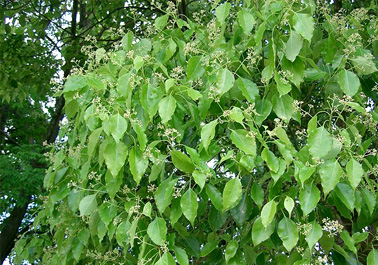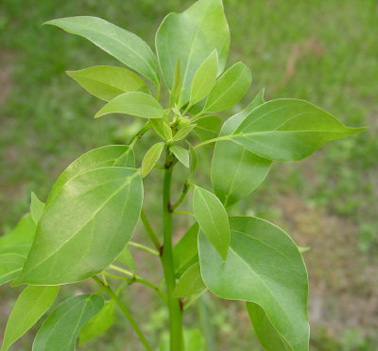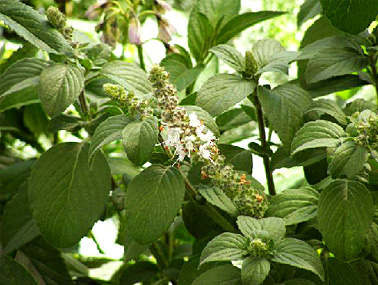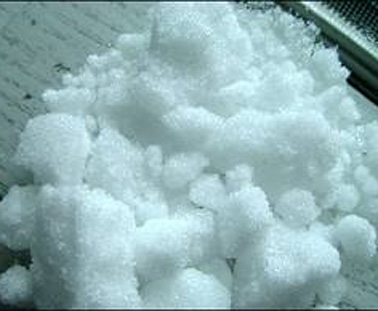|
Karpura (Natural Camphor) is obtained from the leaves,
chipped wood and roots of Cinnamomum camphora (L.) Nees &
Eberm. (Fam. Lauraceae) and whole plant of Ocimum
kilimandscharicum Guerke, Family Lamiaceae, by
hydrodistillation process
Common Name(s) in English & Indian Languages
Sanskrit: Ghanasara, Candra, Himahva, Himabaluka, Sitasiva
Assamese: Karpura
Bengali: Karpur
English: Camphor
Guajarati: Kapur
Hindi: Kapur
Kannada: Karpura
Malayalam: Karpuram, Chutakkapuram
Marathi: Kaapur
Oriya: Karpur
Punjabi: Kapura
Tamil: Karpuram
Telugu: Karpram, Karpuraamu
Urdu: Riyaahi Kapphur, Kaaphoraa
Description:
Colourless or white crystals, granules or crystalline
masses; odour penetrating and characteristic; taste pungent,
aromatic, and followed by a sensation of cold. Readily
pulverisable in the presence of a little alcohol (95 per
cent), chloroform, or solvent ether.
Major chemical constituents:
Safrole, eugenol cinnamaldehyde
Therapeutic uses:
• Flatulence with gurgling sound (Adhmana)
• Digestive impairment (Agnimandya)
• Rheumatism (Amavata)
• Tastelessness (Aruci)
• Diarrhea (Atisara)
• Burning sensation (Daha)
• Pyorrhoea (Dantapuya)
• Toothache (Dantasula)
• Chronic sinusitis (Jirnapratisyaya)
• Itching (Kandu)
• Disease of throat (Kantharoga)
• Cough (Kasa)
• Male impotence (Klaibya)
• Helminthiasis / worm infestation (Krmi)
• Obesity (Medoroga)
• Intercoastal neuralgia and pleurodynia (Parsvasula)
• Joint pain (Sandhisula)
• Asthma (Svasa)
• Thirst (Trsna)
• Skin diseases (Tvakroga, Kustha)
• Eczema (Vicarcika)
• Disorders due to poison (Visavikara)
• Gastro-enteritis with piercing pain (Visucika)
• Renal disorder (Vrkkaroga)
|
|

Cinnamomum Camphora
 Cinnamomum Camphora Cinnamomum Camphora

Ocimum kilimandscharicum Guerke plant

|
|



